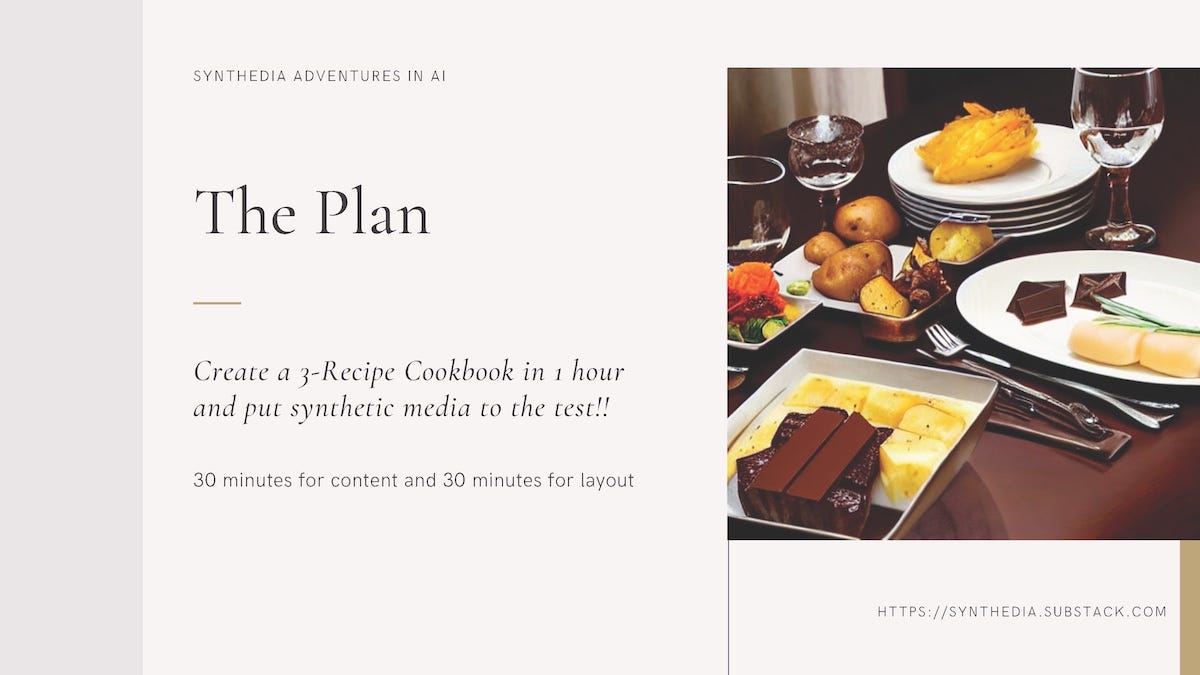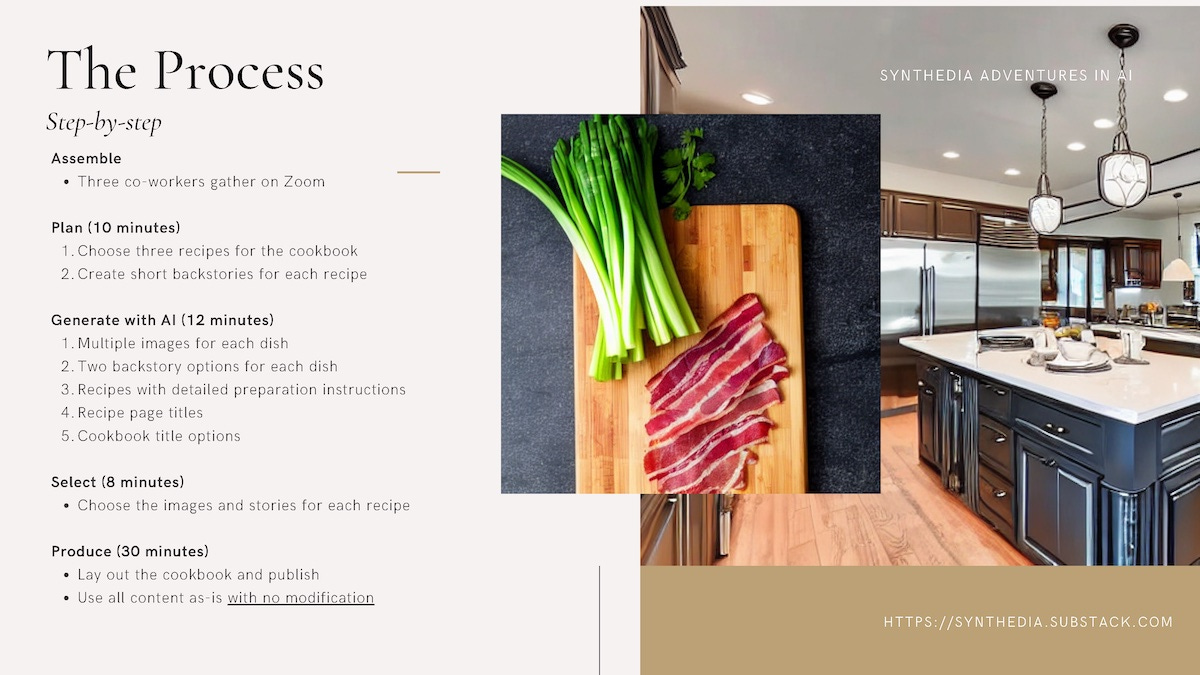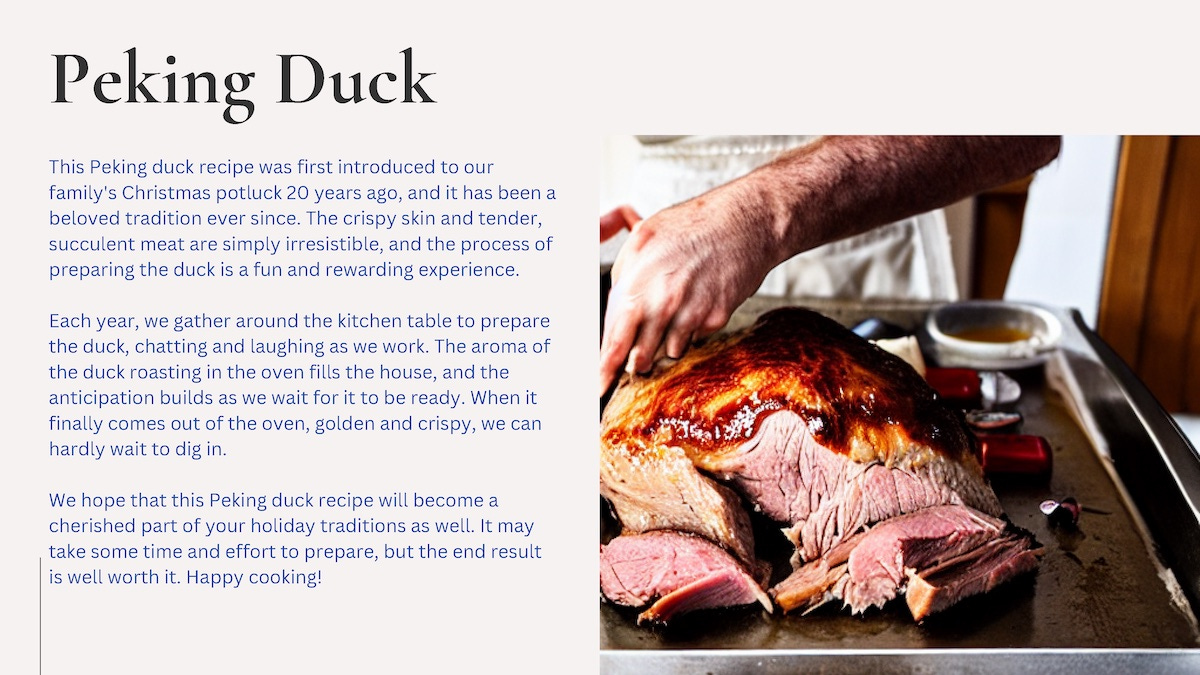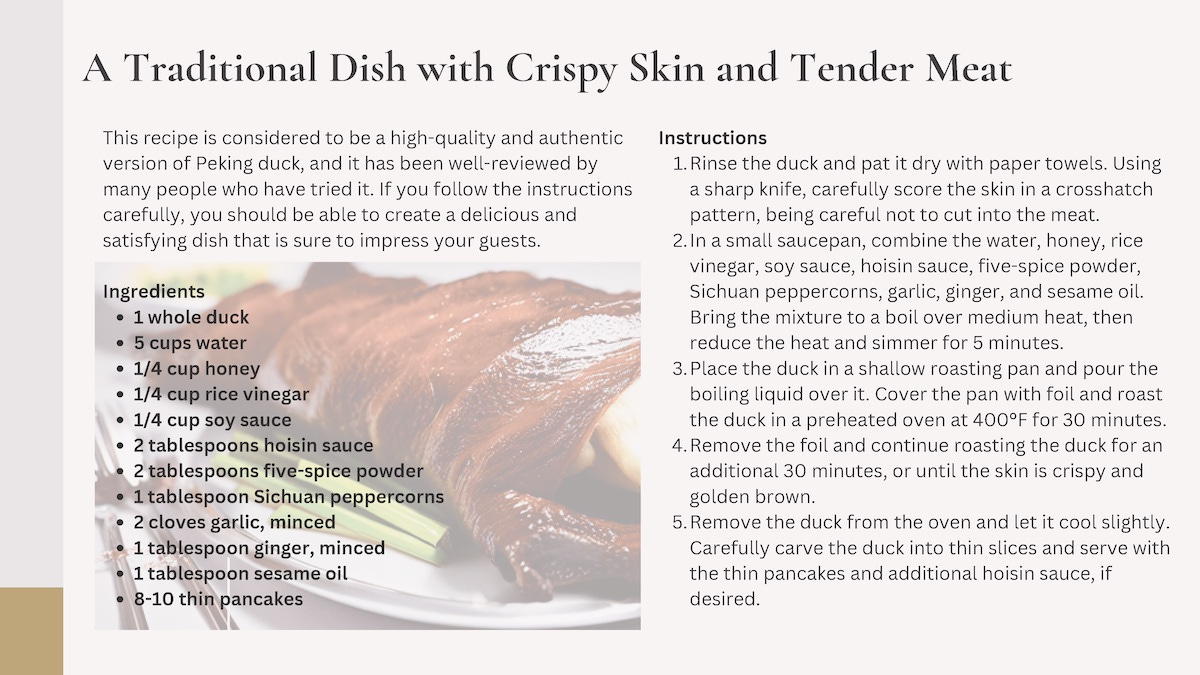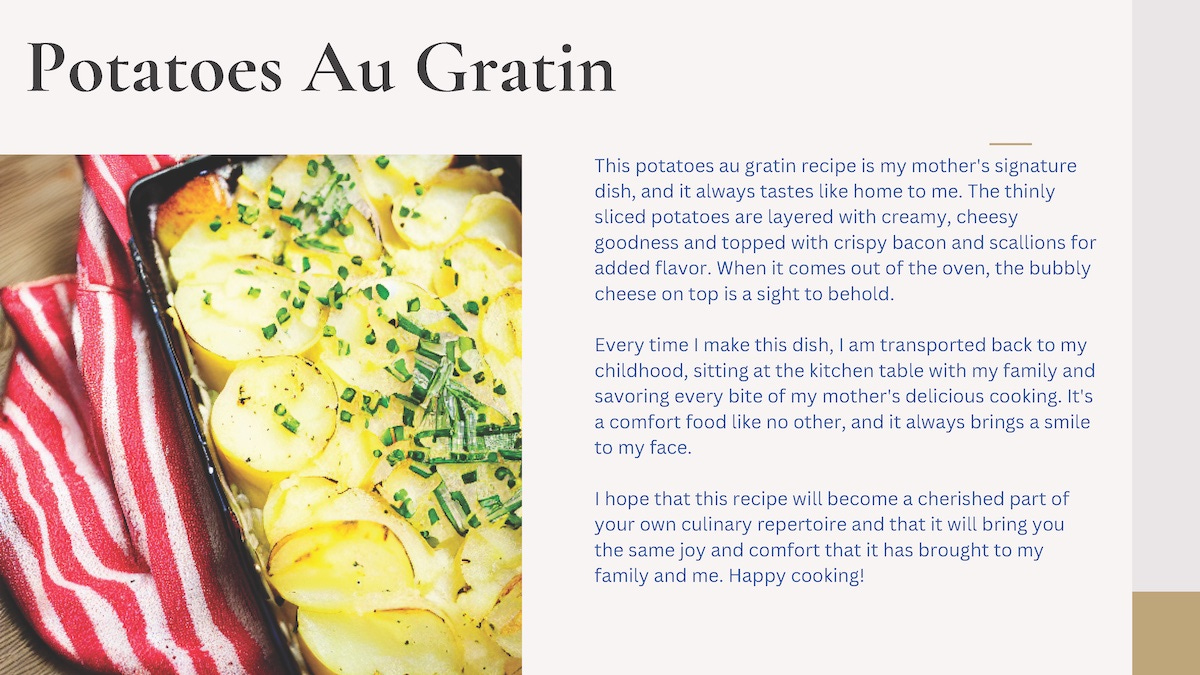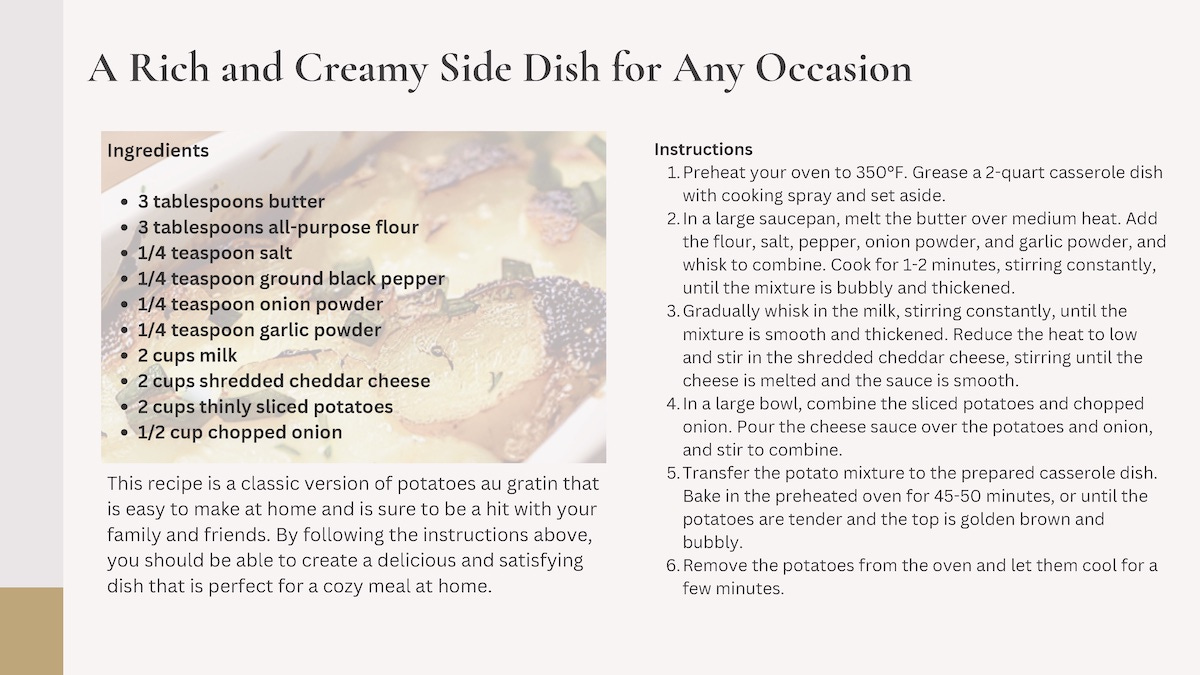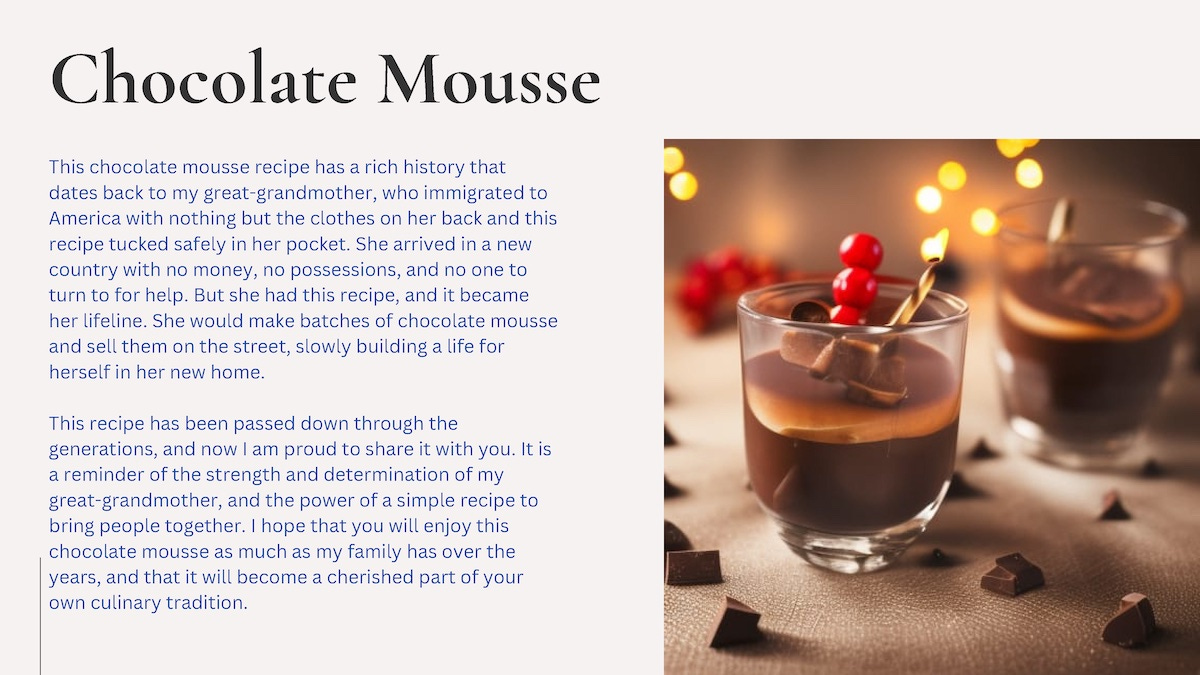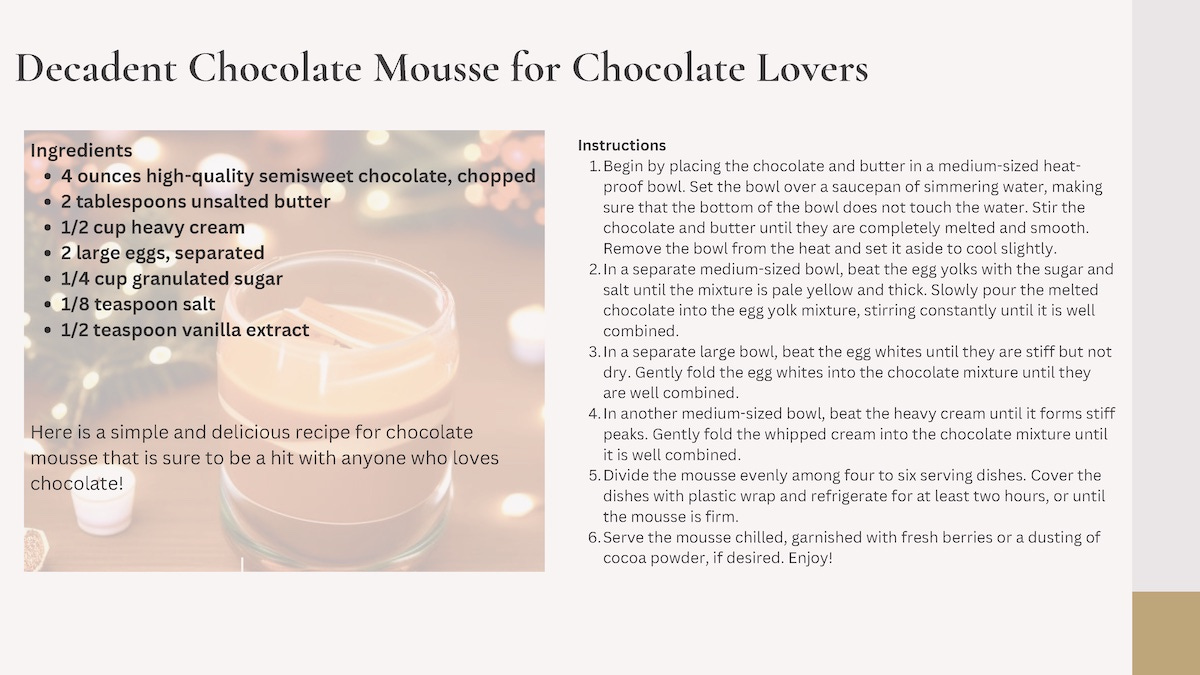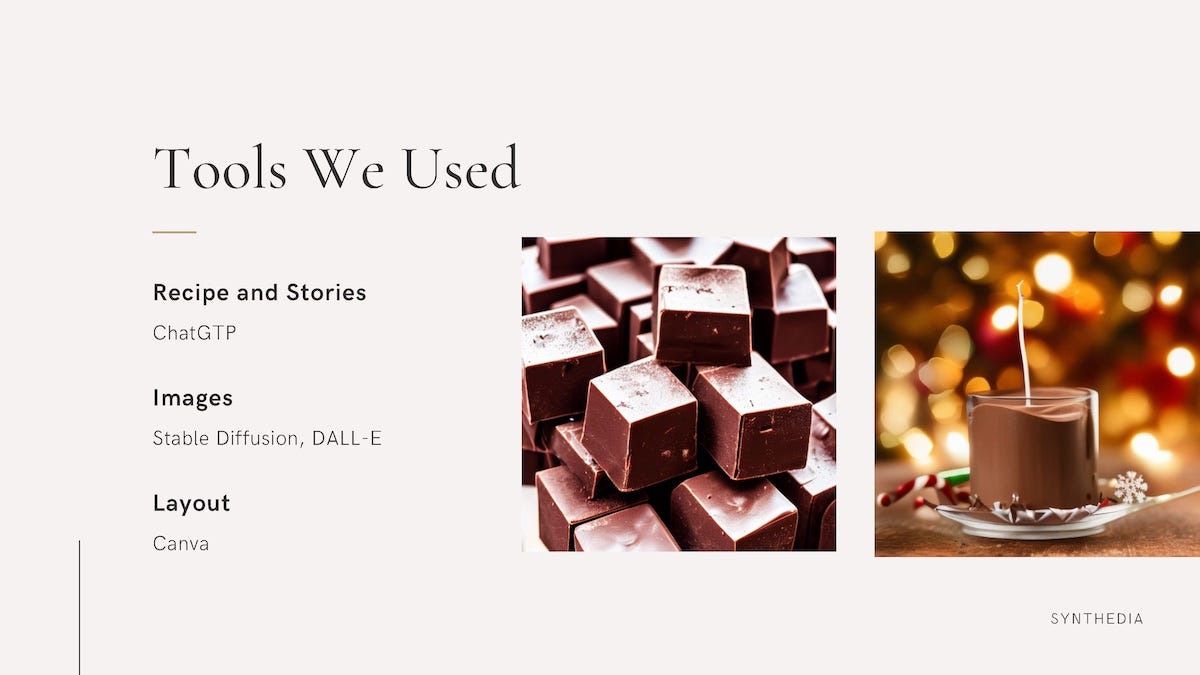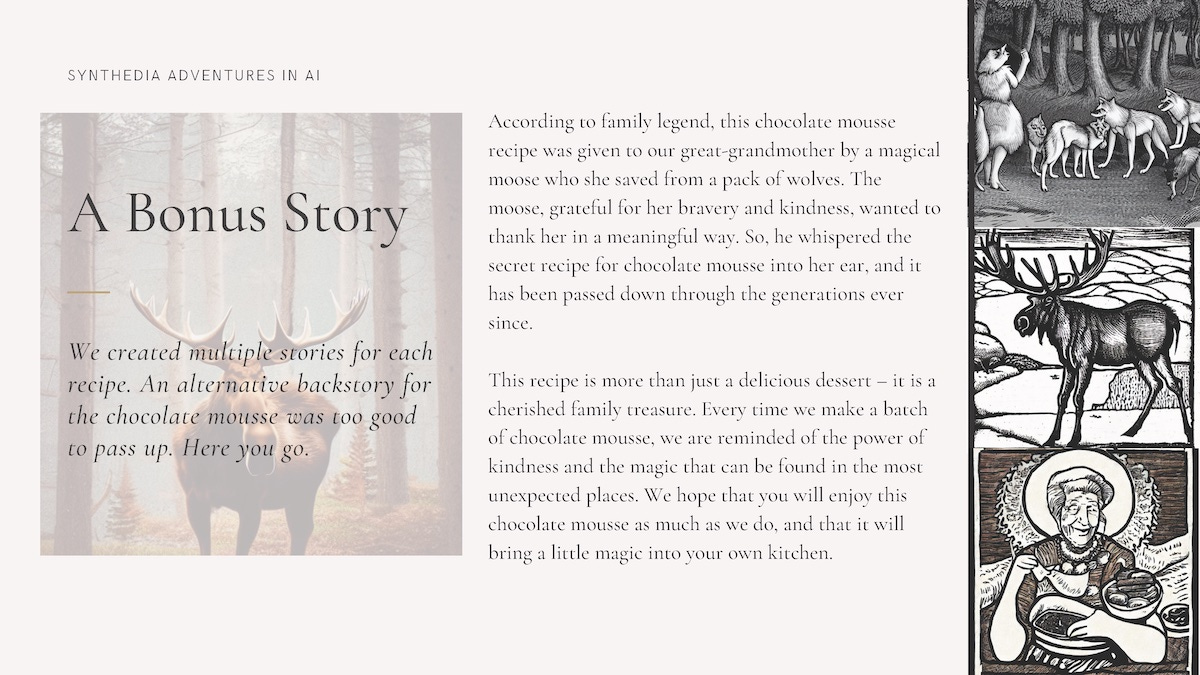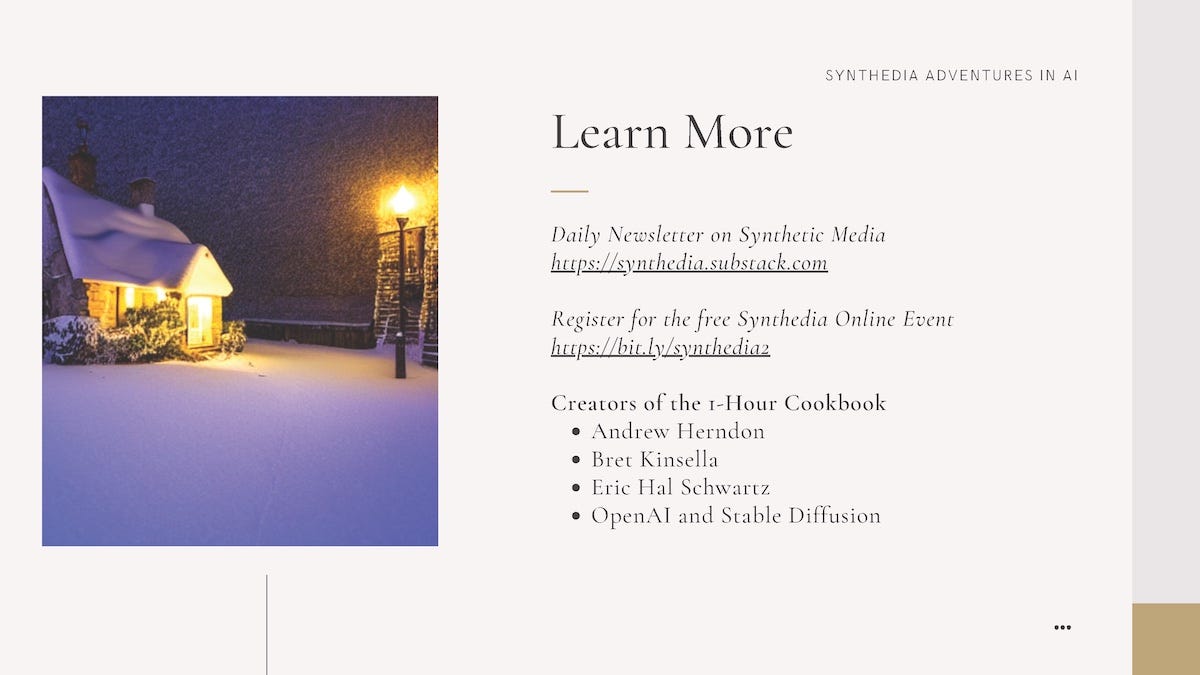How to Create a Cookbook in 1 Hour with ChatGPT, Stable Diffusion, and Canva
3 recipes & 4 stories in the generative AI demonstration
N.B. There are 12 slides embedded here. Depending on your email provider you may see all embedded in reading order, a few here and the rest after a “more” link (e.g. gmail), or all of the images as attachments. Another way to view this and to get additional details on the project is to visit the Voicebot.ai article where we have a slide carousel here.
Synthedia and Voicebot are conducting in-depth research on generative AI-based synthetic media solutions for text and image creation. Some of the findings will be revealed publicly for the first time on December 14th at the Synthedia online conference.
Our research team looked at more than ten AI models in both the text-to-text and text-to-image categories to provide a comparative analysis of the solutions. Not all AI models produce the same output, even those based on the same underlying solutions.
Synthetic Media Demo with ChatGPT
In addition to the data, we wanted to show how these tools could be used in concert to create a product you might see on the web or in a bookstore. A cookbook was an obvious choice because you need a significant amount of text alongside stunning images.
This was a test of both quality and speed. We reserved just 30 minutes for the cookbook planning along with the text and image generation. There were then 30 minutes for creating the digital book. What is a better way for three colleagues to spend a Friday afternoon? One of the team members even likened it to a cross between applied research and team building.
Project Background
The text and images generated by ChatGPT and Stable Diffusion were published as-is, with no edits other than formatting the font size and style. We simply copied and pasted them into a Canva document.
Each recipe includes a backstory in a style popular in modern cookbooks, the ingredients list, and preparation instructions. Also, in case it is not clear, none of the stories are true. We simply let ChatGPT exercise its creativity based on a short prompt with some ideas on the backstory.
The Recipes
What We Learned
The research team is already wading deeply into the generative AI waters, and we have experience creating reports in the digital book format. That certainly helped us move more quickly through the process. However, if you follow a similar process, you should be able to produce something comparable even if it takes more time. We also believe our lack of experience with recipe and cookbook production offsets those other skills somewhat.
Three findings rose to the top from this project:
30 minutes was sufficient time to decide on the type of recipes we wanted, define very brief backstories, and then generate the text and images.
If we had more time in this section, we would have prioritized generating more image variants. After that, we likely would have done some editing on the backstories. Spending an hour on this section definitely would have resulted in a more refined output from a content standpoint.
30 minutes is not nearly enough time to do a proper layout and design, even using a tool such as Canva. Document design and layout are iterative processes. If you have more time for iteration, you will likely deliver a higher-quality output.
We will be going through more details on this project along with data from our text-to-text and text-to-image research during the Synthedia 2 online synthetic media conference. The event is free and will take place on Wedneday, December 14th as you probably know. You can register using the button below.
Also, if you think this was an interesting experiment, I’d appreciate it if you would share it with someone that might benefit from knowing more about this type of AI-enabled project. Newsletters don’t get nearly enough reach!




